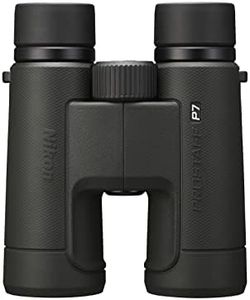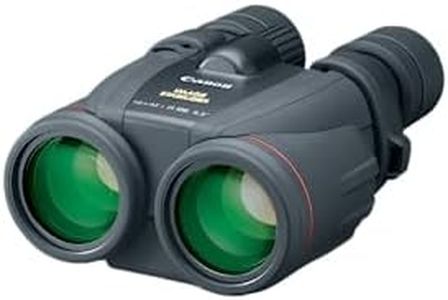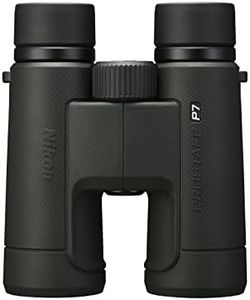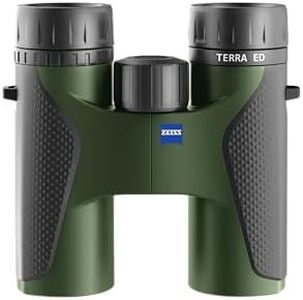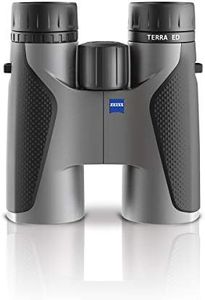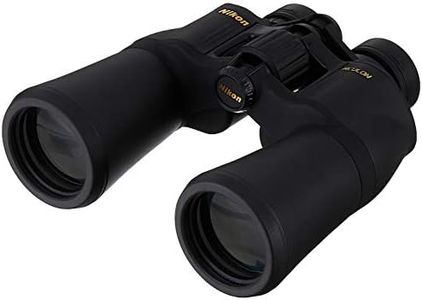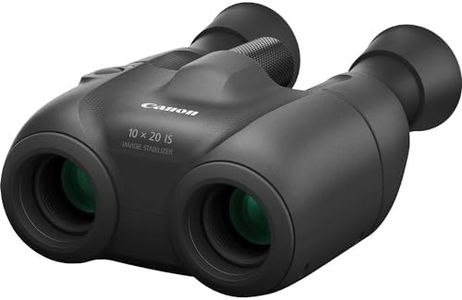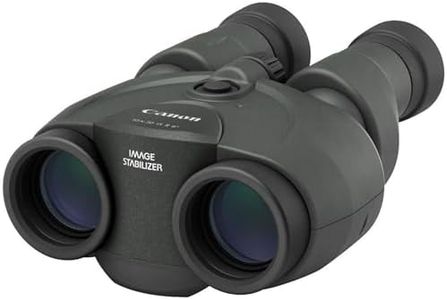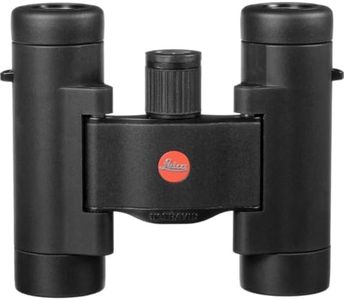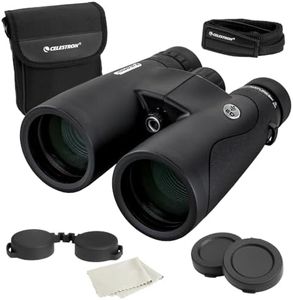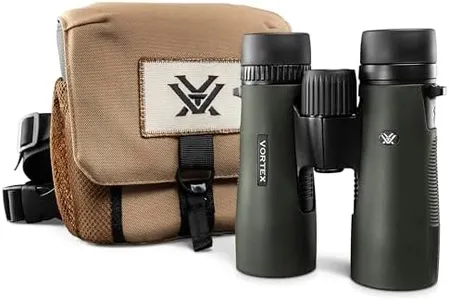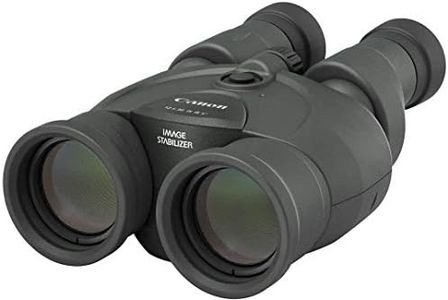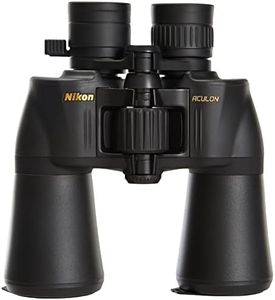We Use CookiesWe use cookies to enhance the security, performance,
functionality and for analytical and promotional activities. By continuing to browse this site you
are agreeing to our privacy policy
10 Best Bird Binoculars
From leading brands and best sellers available on the web.#1
Winner
Buying Guide for the Best Bird Binoculars
Choosing the right binoculars for birdwatching can make your outdoor experience much more enjoyable and rewarding. It's important to find a pair that’s comfortable to use, lets you see details clearly, and suits the type of birding you plan to do. By understanding the key features of binoculars, you’ll be able to match them to the places you’ll visit, your viewing preferences, and even your physical comfort. Pay attention to how you'll carry and use them for longer periods, as well as the typical lighting and distance at your favorite birding spots.Magnification and Objective Lens DiameterThis is usually written as two numbers, like 8x42 or 10x50. The first number (magnification) tells you how many times closer an object appears, and the second number is the diameter of the front lens in millimeters. Magnification between 8x and 10x is most common for birding—higher magnification gives more detail but narrows your field of view and can make images shakier, while lower makes it easier to scan and track moving birds. The objective lens size affects how much light enters; bigger lenses (like 42mm) are better in low light but make the binoculars heavier. Choose lower magnification and smaller objective lenses for portability and ease, or higher numbers for more distant or detailed viewing, but know they’ll be heavier and require steadier hands.
Field of ViewThe field of view (FOV) tells you how wide an area you’ll see through the binoculars—usually given in feet at 1,000 yards or in degrees. Wider FOV makes it easier to spot and follow birds, especially fast-moving or flocking ones, but often comes at the cost of some image detail. Smaller FOV gives more detailed focus but a narrower scene. For birdwatching, a wide field of view (typically above 320 feet at 1,000 yards or above 6 degrees) is preferred for scanning large areas and tracking motion. Think about if you spend more time looking for birds or focusing on watching stationary birds up close when choosing the right FOV.
Close Focus DistanceClose focus distance is the minimum distance at which the binoculars can clearly focus on an object. A shorter close focus (under 8 feet) is great if you enjoy watching small birds or insects close to you, such as in your backyard. If you mostly view birds at a distance, close focus is less critical. Consider your usual observation distances—close focus is essential for near observation, but less important for long-range viewing.
Weight and SizeWeight and size affect how comfortable binoculars are to carry and use for long times. Lighter and more compact binoculars are easier to handle and less tiring during extended walks, but may sacrifice brightness or field of view. Heavier models often provide brighter images and better stability, but can be cumbersome. Think about how far you’ll carry them and whether you want compact convenience or are willing to carry extra weight for better viewing quality.
Waterproofing and DurabilityMany binoculars are built to withstand rain, dust, and rough handling. Waterproof and fog-proof binoculars are filled with nitrogen or argon gas and sealed to keep moisture out, which is useful in damp or changing weather conditions. Durable, rubber-armored bodies protect against drops and bumps. For regular outdoor use, especially in varied weather, prioritize models with waterproof and rugged construction to ensure longevity and reliable performance.
Eye ReliefEye relief describes the distance from the eyepiece at which you can see the full image. This is especially important if you wear glasses—look for eye relief of at least 15mm, so you can comfortably use binoculars without removing your eyewear. If you don’t wear glasses, shorter eye relief is acceptable, but longer eye relief often means more comfortable extended viewing for everyone.
Image Quality (Lens Coatings)Look for binoculars with quality lens coatings, which improve brightness, contrast, and color accuracy while reducing glare. Fully multi-coated lenses provide the best clarity and are particularly helpful in early morning or late afternoon light, when many birds are most active. More advanced coatings mean better image quality, so if you often bird in low light or care most about vibrant details, look for binoculars that mention fully multi-coated optics.
